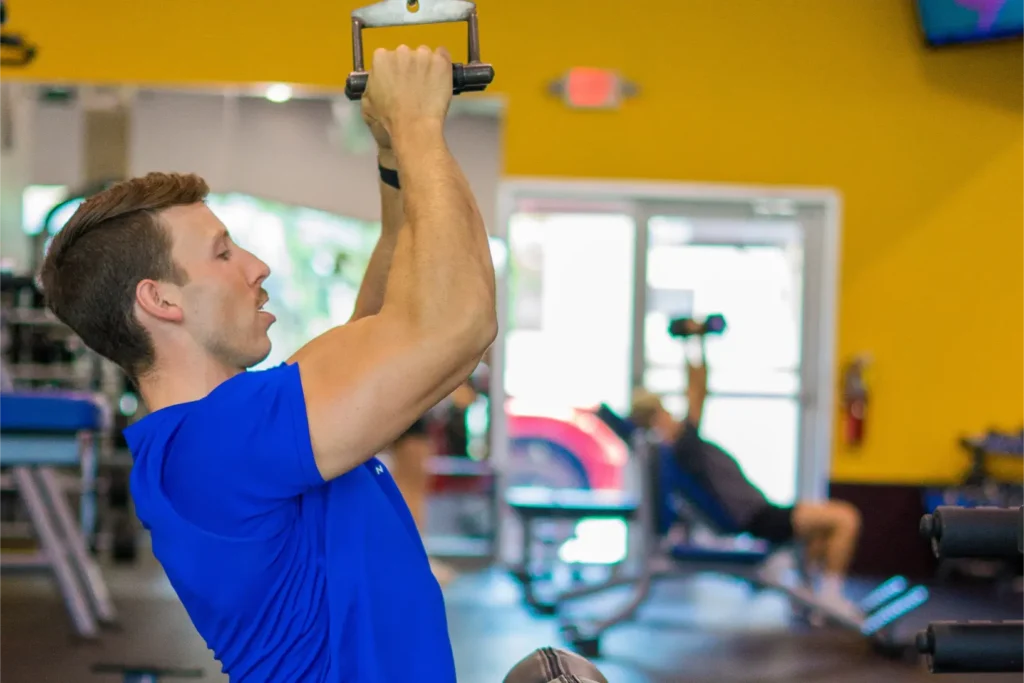In our modern world, where many of us spend hours hunched over computers or staring down at smartphones, poor posture has become increasingly common, leading to a variety of ailments including back pain, neck strain, and decreased energy levels. This article delves into how incorporating yoga into your routine can not only alleviate these issues but also significantly enhance your overall health by improving your posture.
What is a good posture?
Good posture is more than standing up straight. It’s about maintaining your body in alignment with its adjacent parts. Ideal posture distributes gravity through our center, minimizing stress on our muscles and ligaments. Common postural problems include slumping shoulders, a tilted pelvis, or an arched lower back, often exacerbated by prolonged periods of sitting or standing in one position. These issues can lead to chronic discomfort, reduced mobility, and even affect organ function due to compression.
Many office workers benefit from yoga due to their sedentary lifestyle. But did you know there are exercises you can do at your office desk?
How does yoga improve posture?
Yoga enhances posture primarily through strengthening and aligning the spine, the cornerstone of good posture. Regular practice of yoga makes you more aware of your body’s posture and alignment in daily activities.
It strengthens the core muscles — including the abdominals, back, and pelvic muscles — which are crucial to holding the spine erect.
Furthermore, yoga increases flexibility and balance, which are essential for maintaining proper posture. By teaching the body to hold itself correctly, yoga can correct imbalances and misalignments that contribute to poor posture.
Specific yoga poses for better posture
Several specific yoga poses are particularly beneficial for improving posture:
- Mountain Pose (Tadasana): This foundational pose teaches basic alignment and is excellent for improving posture. It involves standing with feet together, arms at the sides, and the body evenly aligned over the feet. Tadasana strengthens the thighs and knees, while also firming the abdomen and buttocks, encouraging the spine to elongate upward.
- Cobra Pose (Bhujangasana): By stretching the chest while strengthening the spine and shoulders, Cobra Pose is perfect for counteracting the rounded shoulders that come with sitting at a desk. It encourages the back muscles to work cooperatively with the spine.
- Child’s Pose (Balasana): Although it appears simple, Child’s Pose helps stretch the hips, thighs, and ankles while reducing stress and fatigue. It also helps release tension in the back and neck, which is crucial for correcting poor posture caused by stress and anxiety. This is why this pose is great for seniors and it goes to show that it’s never too late for yoga when practicing safely.
Each of these poses not only helps in straightening and strengthening the spine but also teaches the body the feeling of correct alignment, which can be carried over into everyday activities, leading to improved posture overall. If you want to try yoga classes in Irmo, visit HiTone Fitness. Right now you can get a 3-day free pass to kickstart your journey and see how yoga can work wonders for you.
Advanced yoga practices for posture
As your yoga practice evolves, advanced poses can offer deeper benefits for posture correction. Inversions such as Headstands (Sirsasana) or Shoulder Stands (Sarvangasana) are particularly effective.
These poses invert the typical pressure on the spine, allowing it to lengthen and release tension differently from most daily activities.
Additionally, poses like the Wheel Pose (Chakrasana), which requires both strength and flexibility, can dramatically improve upper and lower back strength, contributing to a more robust posture.
These advanced practices should be approached with caution and ideally under the guidance of a skilled yoga instructor to ensure they are done safely and effectively.
Integrating yoga into daily life for better posture
Even short, consistent sessions can lead to significant improvements in posture. Morning stretches such as Cat-Cow or simple spinal twists can awaken the body and prepare your spine for the day.
During work, take short breaks to perform seated poses or standing stretches like the Tree Pose (Vrikshasana) to reset your posture and relieve tension.
Evening routines might include more calming, restorative poses like the Forward Bend (Paschimottanasana) to relax and realign the body after a day’s activities.
Final thoughts
Yoga offers more than just a way to stretch and de-stress; it is a profound tool for improving posture, which in turn can enhance your overall health and well-being. By integrating yoga into your daily life and practicing both fundamental and advanced poses, you can significantly improve your spinal alignment, muscle balance, and posture. As you become more aware of your body through regular yoga practice, you’ll not only feel better but also develop a naturally poised posture that radiates confidence and health.





